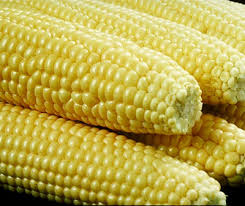Monday, 27 July 2015 21:57
 CHICAGO: Chicago Board of Trade corn and soybean futures plunged to their lowest in more than a month on Monday as improving weather for crop development across the U.S. Midwest sparked a round of long liquidation by speculators, traders said.
CHICAGO: Chicago Board of Trade corn and soybean futures plunged to their lowest in more than a month on Monday as improving weather for crop development across the U.S. Midwest sparked a round of long liquidation by speculators, traders said.
Wheat futures also fell but declines were limited by some short-covering and technical support.
The grains and oilseeds also were caught up in a broad commodities sell-off, stemming from expectations of a near-term U.S. interest rate hike and weakness in the Chinese stock market.
“The perception is the (corn and soybean) crops are stabilizing, if not improving in some areas,” said Tom Fritz, analyst at EFG Group. “Also, you have a general aura over the commodities markets – that they are in a liquidation phase.”
Corn posted the biggest decline, with the front-month contract shedding 4.5 percent and hitting its lowest since June 25.
CBOT September corn futures were down 18-3/4 cents at $ 3.73-3/4 a bushel at 11:05 a.m. CDT (1605 GMT).
The Commodity Futures Trading Commission’s weekly Commitments of Traders report released on Friday afternoon showed that non-commercial traders had built up their biggest long position in corn since October 2012.
CBOT August soybean futures fell 24-3/4 cents to $ 9.66-1/2 a bushel. CBOT September wheat was 7-1/4 cents lower at $ 5.04-1/2 a bushel.
“Weather forecasters expect largely helpful weather in the U.S. Corn Belt for the next week or so,” said Tobin Gorey, director, agricultural strategy, Commonwealth Bank of Australia. “The market seems to be regaining confidence, as have the weather forecasters, that the wettest weather for this season is behind them.”
A U.S. Agriculture Department report on Monday afternoon was expected to show that good-to-excellent ratings for corn stabilized in the last week while soybean ratings improved by 1 percentage point.
Some weekend rains in areas west of the Mississippi River relieved parched growing areas. Additionally, forecasts for drier conditions and cooler-than-usual temperatures in the East were expected to help shepherd the crops through development during the next week to 10 days.





























